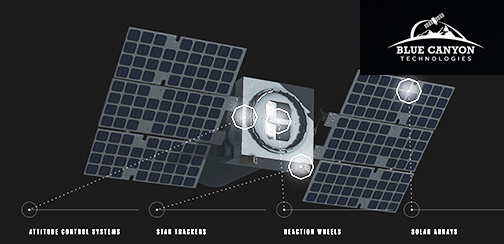
Blue Canyon Technologies (BCT) has been selected by NASA’s Space Technology Mission Directorate’s Small Spacecraft Technology program and NASA’s Ames Research Center in California’s Silicon Valley, in collaboration with the University of Florida and MIT, to provide multiple 3U spacecraft for the firm's Lasercom Infrared Crosslink (CLICK) smallsat flight demonstration missions.
The cubesats will be used for separate demonstration missions: the first is a laser space-to-ground demonstration mission and the second will demonstrate laser crosslinks and ranging in low-Earth orbit.

The new communication capabilities demonstrated by CLICK will enable new classes of smallsat missions, such as swarms for remote sensing or global constellations for communications.
The 3U spacecraft uses BCT’s heritage XB1 avionics to provide a state-of-the-art cubesat platform that maximizes payload volume. The spacecraft includes ultra-high-performance pointing accuracy, a robust power system, command and data handling, RF communications, and dedicated payload interfaces. The spacecraft bus will be developed and tested at BCT’s Spacecraft Manufacturing Center in Colorado.
BCT is currently building more than 60 spacecraft for government, commercial and academic missions. The company has doubled in size over the past 12 months and plans to open its new 80,000-square-foot headquarters and production facility in 2020.
George Stafford, CEO and President of Blue Canyon Technologies, said the company has a unique advantage as a spacecraft bus provider as it is equipped to support high-rate body-pointed lasercom capabilities with our flight-proven precision stability and pointing.
Kerri Cahoy, Associate Professor of Aeronautics and Astronautics at MIT, added that demonstrating precision timing and ranging over a lasercom crosslink using BCT CubeSat platforms will enable new capabilities for coordinated and distributed sensing missions.

